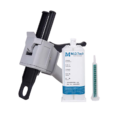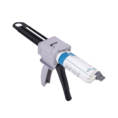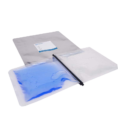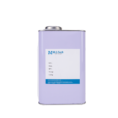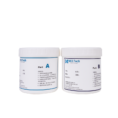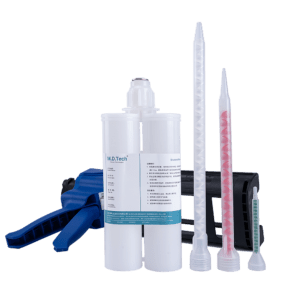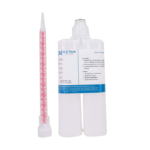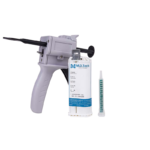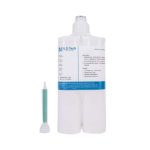MDEP 3211 High strength Epoxy structure adhesive
- Resistance to moisture, dirt, and other atmospheric components
- High strength, excellent adhesion
- Good pollution resistance, low surface pretreatment requirements
- No solvent, no curing byproducts
- Excellent high and low temperature resistance, -50℃-150℃
- It has good adhesion to glass fiber cloth and steel plate
MDEP 3211 is a room temperature/heat curing High strength Epoxy structure adhesive. This two-component adhesive is designed for metal bonding, SMC FRP parts bonding, aluminum honeycomb plate splicing and Nomex paper bonding for motor products.
MDEP 3211 High strength Epoxy structure adhesive can cure at room temperature and heating environment. After thoroughly mixing component A and component B at 1:1 (weight ratio), the product solidifies within a certain time to form protection.
Conventional properties
| MDEP 3211 Gray | MDEP 3211 Black | |||||
| Test item | Test standard | Unit | Part A | Part B | Part A | Part B |
| Color | Visual | — | Black colloid | Beige colloid | Black paste | Beige paste |
| Viscosity | GB/T 2794-2013 | mPa.s | The paste is slightly collapsed | The paste is slightly collapsed | 170,000±30,000 | 200,000±50,000 |
| Density | GB/T 13354-1992 | g/cm3 (25 ° C) | 1.50±0.05 | 1.30±0.05 | 1.60±0.05 | 1.50±0.05 |
Operation process
| Item | Units or conditions | MDEP 3211 Grey | MDEP 3211 Black |
| Mix ratio | Weight ratio | 100:100 | 100:100 |
| Mix ratio | Volume ratio | 100:100 | 100:100 |
| Mix density | g/cm3 (25 ° C) | 1.40±0.05 | 1.55±0.05 |
| Operating time (1) | min (25 ° C) | 80mins | 110mins |
| Curing time | ℃/min | 60 ° C / 60 mins or 25 ° C 24 hrs | |
Curing speed
| BEEP 6211 Black | |||||||
| Temperature, C | 0 | 5 | 15 | 25 | 35 | 60 | 80 |
| Operating time, h | 8 | 5 | 1 | 0.5 | 0.3 | 0.1 | 0.05 |
| Time to reach 50% bonding strength, h | 72 | 48 | 24 | 12 | 8 | 0.5 | 0.1 |
| Time to reach 100% bonding strength, h | 240 | 96 | 48 | 30 | 16 | 2 | 0.5 |
The ambient temperature below 5℃ is not recommended to use, if used, it is necessary to warm the AB glue to more than 20℃ before construction, in order to obtain the best mixing effect. For the best curing speed, you can choose the method of heating curing or pre-drying the product of dispensing glue.
Typical performance
| Item | Test standard | Unit | Numerical value |
| Hardness | GB/T 531.1-2008 | Shore D | 83 |
| Shear strength | GB 7124-2008 | Mpa, Fe/Fe | ≥15 |
| Thermal conductivity | GB/T 10297-1998 | W/mK | 0.4 |
| Coefficient of expansion | GB/T 20673-2006 | μm/ (m, ° C) | 55 |
| Water absorption | GB/T 8810-2005 | 24h, 25 ° C, % | < 0.3 |
| Dielectric strength | GB/T 1693-2007 | kV/mm (25 ° C) | > 20 |
| Loss factor | GB/T 1693-2007 | (1MHz) (25 ° C) | 0.014 |
| Dielectric constant | GB/T 1693-2007 | (1MHz) (25 ° C) | 3.53 |
| Volume Resistance | GB/T 1692-92 | (DC500V) Ω· cm | 1.2 x 1015 |
Note: All the above data were determined after 7 days of adhesive curing at 25℃, 55%RH.
| Item | Test standard | Unit | Numerical value | |
| Compressive strength | 12hr | GB 11837-89 | MPa | ≥30 |
| 24hr | GB 11837-89 | MPa | ≥55 | |
| Tensile strength | 2hr | GB/T 528-2009 | MPa | ≥3 |
| 24hr | GB/T 528-2009 | MPa | ≥30 | |
| Bonding strength | GB/T 7124-2008 | Mpa, 8-figure mortar | > 8 | |
| Shrinkage rate | GBT15585-1995 | % | < 1.5 | |
| Elongation at break | GB/T 528-1998 | % | > 3 | |
| Temperature range | GBT 20028-2005 | ℃ | -40 to 150 | |
Burn-in performance
| Curing Conditions | Substrate | Aging conditions | Shear strength MPa | Mode of destruction |
| Room temperature
7 days |
SMC/SMC | High and low temperature impact
(-40 ° C /30mins, 80 ° C /30mins, repeat 10 times) |
9.2 | 90% substrate damage |
| Al/Al | 15.8 | 90% substrate damage | ||
| Nomex paper /Nomex paper | 4.6 | 80% substrate damage | ||
| 80 ℃ /
2 hours |
SMC/SMC | 150° C /1 hour | 8.5 | 100% substrate destruction |
| Al/Al | 12.6 | 100% substrate destruction | ||
| Nomex paper /Nomex paper | 2.3 | 48% substrate damage |
Used for SMC FRP parts bonding, aluminum honeycomb plate splicing and transformer motor core bonding, Nomex paper bonding, high-speed rail track repair, Rail transit metal and plastic, metal and composite bonding, etc.
Precautions for operation
- Surface treatment. Use sandpaper or solvent to clean the sticky surface, remove the surface grease and dirt, and improve the bonding environment.
- Barrel A, B material is recommended before use, please first stir A/B components, A, B should pay attention to sealed storage after use.
- When mixing, attention should be paid to stirring in the same direction, otherwise too many bubbles will be mixed; The container frame and the bottom of the glue should also be stirred evenly, otherwise there will be uneven mixing caused by local non-curing phenomenon.
- The temperature is too low will lead to slow curing speed, when the initial strength can not be reached, the need for constant temperature control in the field.
Related products
Color: Black/Clear
MDEP 3225 3-5mins cured epoxy structural adhesive
Color: Black/White/Clear
MDEP 3090 Black/Clear Epoxy structure adhesive
Color: Black/Clear







